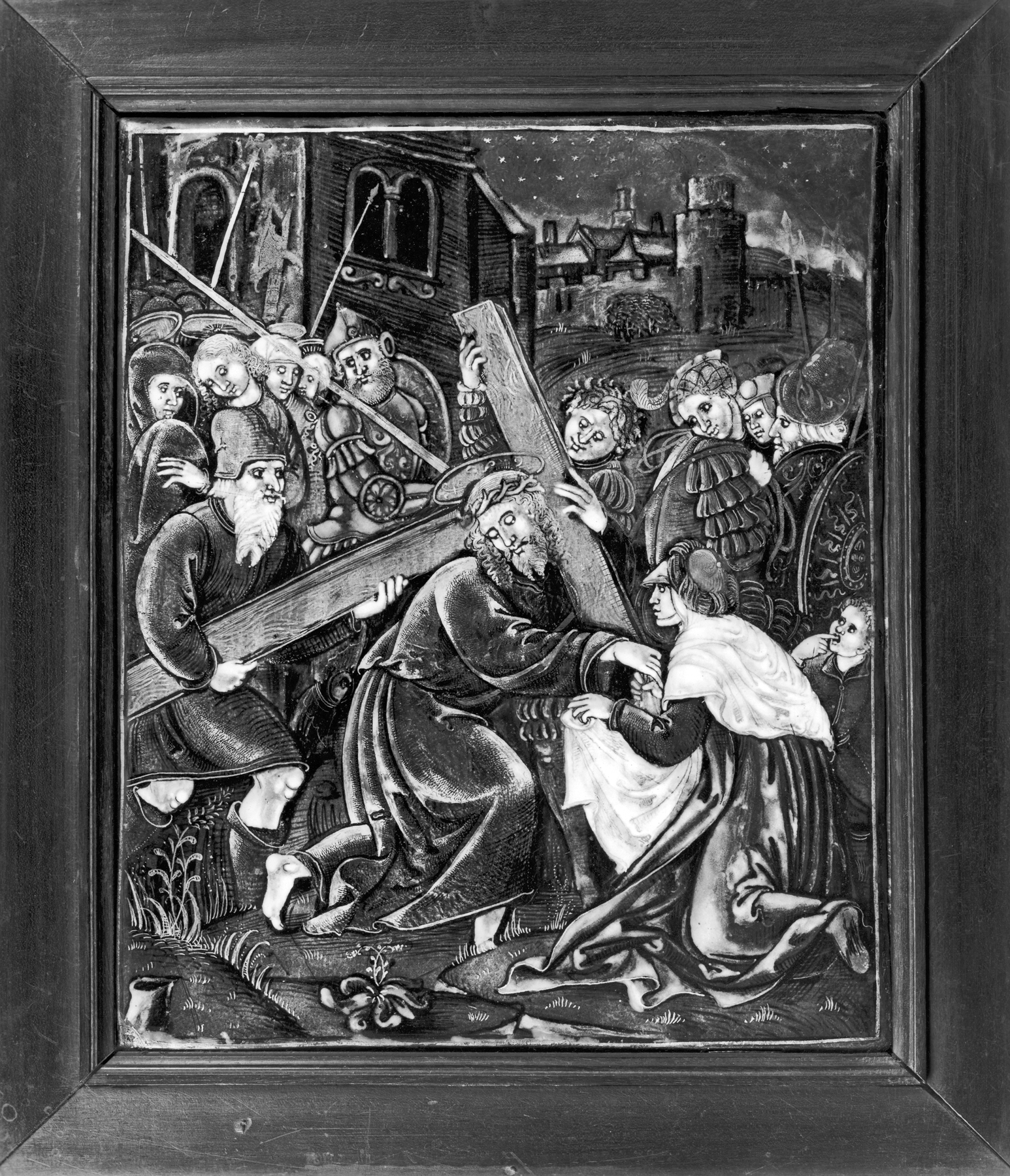Plaque with Christ Carrying the Cross
(Renaissance Europe )
The episode of Christ carrying his cross to Calvary would be part of a Passion series making up an altarpiece for private devotion. The setting is indebted to the corresponding scene in the German artist Albrecht Dürer's "Small Woodcut Passion" of 1509-11. The composition is less complicated, however, and the slashed sleeves of two soldiers provide a "modern" detail. The use of color, especially the translucent wine-red, as well as the gilding in the star-strewn sky and Christ's robes and head produces a brilliant, decorative effect.
On the basis of style, this plaque appears to be an early work by Leonard Limosin, one of the greatest masters of painted enamel, possibly before his earliest dated plaques from 1534.
Provenance
Provenance (from the French provenir, 'to come from/forth') is the chronology of the ownership, custody, or location of a historical object. Learn more about provenance at the Walters.
[in Venice in 1863]; Baron de Theïs Collection Sale, Paris, May 6, 1874; J. Pierpont Morgan, New York (?) [date and mode of acquisition unknown]; Arnold Seligmann, Rey and Co., New York [date and mode of acquisition unknown]; Henry Walters, Baltimore, ca. 1919, by purchase; Walters Art Museum, 1931, by bequest.
Exhibitions
| 1869 | Beauvais, 1869. |
| 1867 | Exposition Universelle. Paris. |
Geographies
France, Limoges (Place of Origin)
Measurements
H: 6 11/16 x W: 5 7/16 in. (17 x 13.8 cm)
Credit Line
Acquired by Henry Walters, ca. 1919
Location in Museum
Accession Number
In libraries, galleries, museums, and archives, an accession number is a unique identifier assigned to each object in the collection.
In libraries, galleries, museums, and archives, an accession number is a unique identifier assigned to each object in the collection.
44.59


